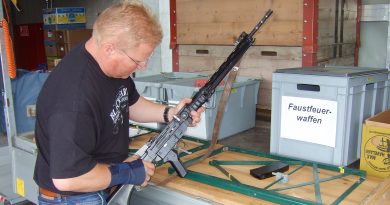Focus on Escalation: Ecuador
Collin Duran
Staff Writer
Ecuadorian President Lenín Moreno can currently be found stuck between a rock and a hard place. The rock is a $4.2 billion loan from the International Monetary Fund (IMF) to help relieve Ecuador’s foreign debt, while the hard place is a mass of Ecuador’s youth, indigenous people, and transportation union. In the middle of it all, a new policy has been implemented ending the state’s over forty-year-old fuel subsidy and launching Ecuador into the worst protests the country has seen in decades, forcing an official “state of emergency.”
The Ecuadorian President has been lambasted by his people following his announcement to cut fuel subsidies, which according to NPR, have already driven gas prices up $.54 and diesel prices up $1.27. There are expectations that prices for both gas and diesel will double, BBC reports. Since the policy announcement, the country has been immersed in protests, according to the Washington Post. There have been over 500 arrests, the destruction of numerous shops and buildings in the city’s capital, the death of one protester, and a net loss of a whopping 12 percent of the nation’s oil production. Tensions have only risen since President Moreno announced Monday that he will not reverse his decision to eliminate the subsidies, further digging himself into a hole of unpopularity within his own country.
Protesters have been nothing if not effective in making their opposition to the President’s policy more than clear. Comprised of CONAIE, an organized group of indigenous peoples across the country, including students and union workers, joined forces with an organized strike by the country’s transportation union to make their sentiments heard. Government buildings were looted and vandalized, emergency response vehicles were destroyed, oil fields were captured by indigenous protest groups, radio and television services were suspended, and road ways throughout the Andes were occupied to the point where there was no transportation in or out of the area, Bloomberg reports.
Protesters are hoping that these actions, even if extreme and destabilizing, will create enough pressure for Moreno to reverse his policy decision. Those fighting against the President’s subsidy cuts make up the most economically challenged demographics in Ecuador and are hoping for a reversal to avoid future financial stress.
But a change in the policy now is unlikely. Despite the rampant civil unrest and a current approval rating of an abysmal 30 percent, and according to The Guardian, the Ecuadorian president is making the financially responsible decision by following through with the so-called “austerity program.” The Washington Post reports that Moreno defended the policy, arguing, “It’s necessary to correct grave economic errors… In the region, the only country with this fuel subsidy is Venezuela. And you’ll agree with me, it’s not a good example to follow.” According to the BBC, the numbers back up the President’s claim; fuel subsidies cost the government $1.3 billion annually and had been in place since the late 70s, costing the government billions for the last forty years.
Additionally, in cutting the fuel program, along with other public spending projects, the Ecuadorian government was able to secure a $4.2 billion loan from the IMF in the hopes of addressing both the country’s foreign debt problem and fiscal deficit, according to The Guardian. But in ‘sticking-to-his guns’ and upholding the subsidy cut, Moreno is pitting himself against his own people.
Protesters have been skeptical of the IMF loan and as a possible egging on by Venezuelan President Nicolas Maduro and Ecuadorian opposition leader Rafael Correa, Reuters has cited the aforementioned loan as the root cause of the subsidy cuts. Political scientist Javier Corrales of Amherst College however suggests that civilly unpopular yet financially responsible economic plans are not only becoming a commonality in Latin America but could in fact be an eventuality for all states in the region. In a conversation with the Washington Post, Corrales argues “States pursue expansionary policies that are unsustainable, but which consumers like… And eventually they’re followed by restrictive policies that are inevitable but which consumers dislike.”
With no end to the protests in sight and Moreno holding stead-fast to his subsidy cut, he will likely find him shimmied in between that rock and a hard place for a while.



